If you’ve been looking for a new HVAC system, you’ve seen the prices go up a lot. The cost for a new unit, installation, and upkeep has jumped in recent years. Many people are wondering why this is happening.
Several things are causing the high prices. Tariffs and trade wars have made things more expensive. The COVID-19 pandemic has also caused problems in the HVAC industry. Labor shortages and higher wages, along with the cost of diesel fuel and essential materials, have all added to the prices.
If you need a new HVAC system or are looking to service your current one, it’s good to know why prices are high. This knowledge helps you make smart choices and save money. By understanding the HVAC industry’s current situation, you can find ways to manage the cost of keeping your home comfortable.
Key Takeaways
- HVAC systems have become significantly more expensive due to a combination of factors, including tariffs, supply chain disruptions, labor shortages, and rising material costs.
- Tariffs on steel and aluminum have increased the raw material costs for HVAC manufacturers, leading to higher prices for consumers.
- The COVID-19 pandemic has caused manufacturing slowdowns and disruptions to the global supply chain, resulting in shortages of HVAC components and equipment.
- Labor shortages in the HVAC industry, driven by factors like older technicians retiring and delays in training new ones, have pushed up wages and service costs.
- The rising cost of diesel fuel, essential raw materials, and refrigerants have all contributed to the overall increase in HVAC system prices.
The Impact of Tariffs and Trade Wars
Before COVID-19 hit, the world was already dealing with tariffs and trade wars. The U.S. put a 25% tariff on steel and a 10% tariff on aluminum in 2018. This hurt many countries, including China, a big player in HVAC.
The tariffs made HVAC raw material costs go up. This forced HVAC makers to change their prices. They had to pass some of these costs to the people who buy their products.
The Tariffs on Steel and Aluminum
The steel tariffs and aluminum tariffs by the U.S. really hit the HVAC industry hard. They made the materials needed for HVAC systems, like steel and aluminum, more expensive. So, HVAC makers had to raise their prices to keep making money.
They then had to pass these price hikes to the people who buy their products. This made HVAC systems more expensive for everyone.
| Tariff | Rate | Impact on HVAC Industry |
|---|---|---|
| Steel Tariff | 25% | Higher costs for steel used in HVAC components and equipment |
| Aluminum Tariff | 10% | Increased prices for aluminum used in HVAC coils and other parts |
These trade wars and tariffs really hurt the HVAC industry. They made raw materials more expensive. This led to more expensive HVAC systems for everyone.
Manufacturing Disruptions Caused by COVID-19
The COVID-19 pandemic has greatly affected the manufacturing industry, including HVAC units. The virus spread worldwide, causing unique challenges. These challenges disrupted manufacturing and supply chains, leading to shortages and higher prices for HVAC equipment.
Many manufacturing plants had to shut down or work at a reduced capacity. This was due to strict lockdowns to slow the virus’s spread. The shortage of essential components for HVAC units made things worse.
A study by the Institute for Supply Management in 2020 showed nearly 75% of companies faced supply chain disruptions. This bottleneck in production made HVAC units less available. As a result, prices went up due to the supply and demand principle.
The effects of COVID-19 on manufacturing have been significant. They led to manufacturing slowdowns and supply chain disruptions. These issues have directly affected HVAC unit availability and caused price increases in the HVAC market.
How did the COVID-19 pandemic affect HVAC manufacturing?
The COVID-19 pandemic had a big impact on HVAC manufacturing. It caused production slowdowns and supply chain disruptions.
- Many HVAC manufacturing plants had to shut down or work at reduced capacity due to lockdowns.
- Disruptions in global supply chains meant essential components for HVAC units were in short supply.
- A study by the Institute for Supply Management found nearly 75% of companies faced supply chain disruptions.
What was the impact of these manufacturing disruptions on HVAC unit availability?
The manufacturing slowdowns and supply chain disruptions caused by COVID-19 led to fewer HVAC units available. This situation drove prices up due to the supply and demand principle.
| Metric | Pre-Pandemic | During Pandemic |
|---|---|---|
| HVAC Unit Availability | High | Low |
| HVAC Unit Prices | Stable | Increased |
How long did the impact of COVID-19 on HVAC manufacturing last?
The impact of COVID-19 on HVAC manufacturing has lasted a long time. The pandemic’s ongoing effects are still being felt. As the pandemic situation changes, the future of HVAC availability and pricing is uncertain.
Labor Shortages and Rising Wages
In the HVAC industry, a big problem is the lack of workers. This issue got worse because of the COVID-19 pandemic. Older technicians, who are at higher risk, stopped working for health reasons. Others were quarantined, making the workforce even smaller.
Training centers were closed, which slowed down the flow of new HVAC technicians. This made the shortage even more severe.
The U.S. Bureau of Labor Statistics says the need for HVACR mechanics and installers will grow by 15% from 2016 to 2026. A survey by The Air Conditioning, Heating, and Refrigeration Institute (AHRI) and the Partnership for Air Conditioning, Heating, Refrigeration Accreditation (PAHRA) found that 75% of employers struggle to find skilled HVAC technicians.
The Challenges of Finding Qualified Technicians
To keep workers and attract new ones, companies have to pay more. This increase in wages, along with the cost of PPE and safety training, has made HVAC services more expensive. This creates a cycle where the lack of technicians raises labor costs, leading to higher prices for HVAC services.
| Challenges in Finding Qualified HVAC Technicians | Potential Solutions |
|---|---|
|
|
The HVAC industry faces big challenges with labor shortages and rising wages. To solve these problems, companies need to invest in training and certification. They should also offer good pay and benefits. Creating apprenticeship programs can help grow the next generation of HVAC technicians. This way, companies can keep providing high-quality service to their customers.
Why are HVAC Systems So Expensive Right Now?
Homeowners and business owners have seen HVAC system prices go up a lot lately. This price hike is due to several factors affecting the industry. Let’s look at the main reasons why HVAC systems are so pricey now.
Tariffs and Trade Wars
The U.S. has put tariffs on steel and aluminum imports. This has made these key materials more expensive. As a result, manufacturers have raised their prices for HVAC units.
COVID-19 Disruptions
The COVID-19 pandemic has messed up global supply chains and manufacturing. This has led to a shortage of HVAC units. With fewer units available, prices have gone up as people scramble to buy them.
Labor Shortages and Rising Wages
The HVAC industry is short on skilled workers. Older workers are retiring, and training new ones has been slow. This shortage has caused wages for HVAC techs to rise. Higher wages mean higher prices for HVAC systems.
| Factor | Impact on HVAC Costs |
|---|---|
| Tariffs on Steel and Aluminum | Increased raw material costs for manufacturers |
| COVID-19 Disruptions | Supply shortages leading to higher demand and prices |
| Labor Shortages | Rising wages for HVAC technicians |
These factors, along with others, have led to higher HVAC system prices. As you deal with these costs, it’s important to understand what’s behind them. This knowledge will help you plan for your heating and cooling needs.
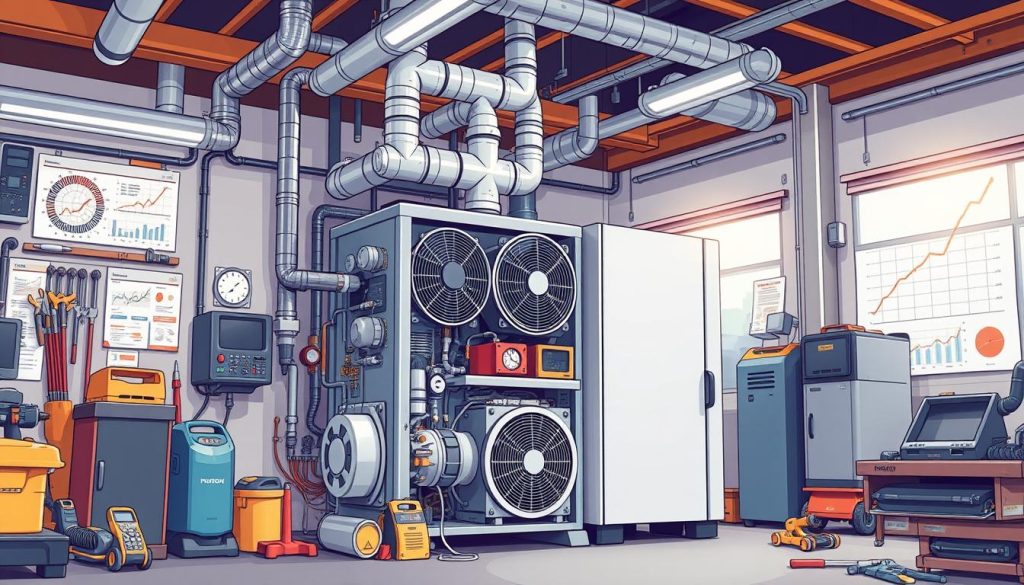
The Rising Cost of Diesel Fuel
The cost of diesel fuel keeps going up, affecting HVAC service prices. HVAC companies use diesel vehicles for their work. This means higher diesel fuel costs lead to higher HVAC service fees and might limit HVAC service areas.
Diesel vehicles are big and can carry a lot, making them good for HVAC work. But, with diesel fuel costs rising, it’s getting pricey. This is making HVAC companies rethink how they do things.
To deal with the high diesel fuel costs, HVAC companies might cut back on where they go. They might also charge more HVAC service fees to cover their fuel and transport costs.
| Year | Average Diesel Fuel Price (U.S.) | Percentage Change |
|---|---|---|
| 2020 | $2.56 per gallon | -16.3% |
| 2021 | $3.29 per gallon | 28.5% |
| 2022 | $4.71 per gallon | 43.2% |
The diesel fuel costs are affecting the HVAC industry a lot. This means higher HVAC service fees and maybe smaller HVAC service areas. HVAC companies are trying to stay profitable, so customers might need to adjust their budgets.
The Impact of Raw Material Prices
HVAC system costs have gone up, mainly because of higher raw material prices. This includes steel, copper, aluminum, and lumber. These essential parts have become pricier, making HVAC systems more expensive for buyers.
Essential Raw Materials for HVAC Manufacturing
Steel is a big part of HVAC systems, used in ductwork and more. Lumber is key for moving HVAC units and setting up ducts. Copper piping holds refrigerant, and copper and aluminum are in other parts too.
Prices for these materials have gone up, as shown by the U.S. Bureau of Labor Statistics and NASDAQ. This rise affects the cost of HVAC parts and equipment.
| Raw Material | Price Trend (YoY) |
|---|---|
| Steel | Up 25% |
| Copper | Up 15% |
| Aluminum | Up 20% |
| Lumber | Up 35% |
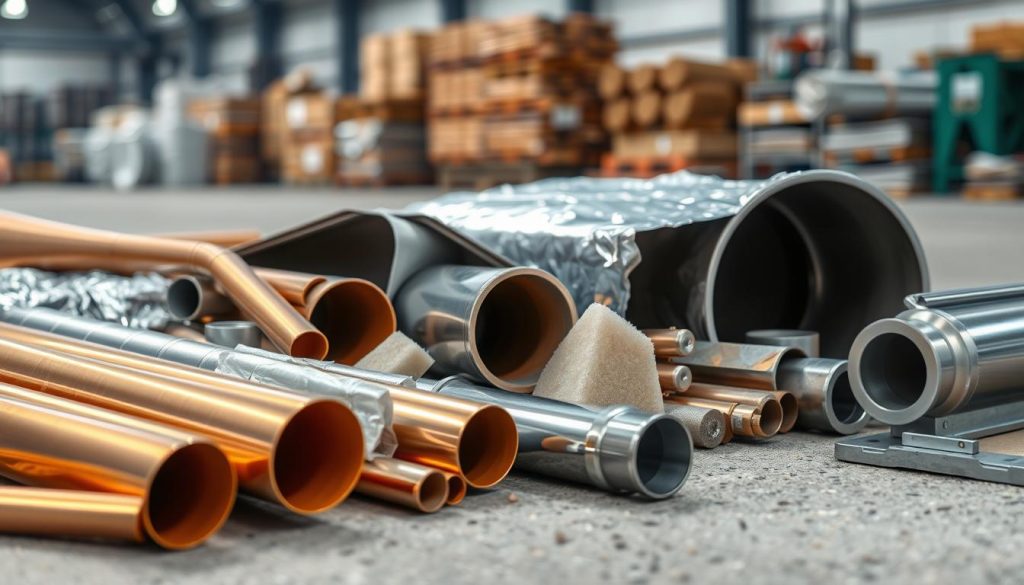
The cost of raw materials directly affects HVAC system prices. This change impacts both homeowners and businesses. It’s important to understand these price changes to make smart choices in the HVAC market.
Refrigerant Price Increases
The HVAC industry faces many challenges, and refrigerant prices are a big one. Refrigerant is key for cooling and heating systems. But, prices have gone up, making repairs and replacements more expensive.
The Phaseout of R-22 and the Shift to Eco-Friendly Alternatives
R-22, or Freon®, is being phased out for greener options. This is because R-22 harms the environment. Now, HVAC systems need new refrigerants, which cost more.
The Increasing Demand for R-410A
R-410A is now in high demand as R-22 fades away. It’s a blend that’s better for the planet. But, its price has gone up due to supply chain issues and tariffs.
| Refrigerant | Current Price Range | Percentage Increase from 2019 |
|---|---|---|
| R-22 | $250 – $350 per 30 lb. cylinder | 30-40% |
| R-410A | $150 – $220 per 25 lb. cylinder | 20-30% |
The table shows big price hikes for R-22 and R-410A. R-22 prices have jumped 30-40%, and R-410A has seen a 20-30% increase since 2019. These price jumps add to the cost of HVAC work.
Understanding the rise in refrigerant prices is key for the HVAC industry. Homeowners and businesses need to work with their HVAC contractors. This way, they can plan for the higher costs of HVAC maintenance and upgrades.
The Semiconductor Chip Shortage
The ongoing chip shortage is hitting the HVAC industry hard. It’s making high-end, energy-efficient HVAC systems harder to find and more expensive. Chips are key in modern HVAC units, powering controls, smart thermostats, and monitoring systems.
With the global chip shortage, HVAC makers are finding it tough to get the chips they need. This is causing a drop in the supply of top-notch HVAC units and parts. This includes heat pumps, mini-splits, and variable-speed central air conditioners.
What is the impact of the semiconductor chip shortage on HVAC equipment availability?
The chip shortage is expected to cut down on the supply of advanced HVAC systems. With fewer chips, HVAC makers might not be able to meet demand. This could lead to longer wait times and fewer choices for buyers.
How is the semiconductor chip shortage affecting HVAC equipment pricing?
As the supply of high-efficiency HVAC systems dwindles, prices are likely to go up. With fewer units available, makers and sellers might raise prices. This is because they have to pass on the higher costs of the scarce chips to customers.
| HVAC Equipment | Potential Price Impact |
|---|---|
| Variable-Speed Central Air Conditioners | Increased by 10-20% |
| Heat Pumps | Increased by 8-15% |
| Mini-Split Systems | Increased by 5-12% |
The chip shortage is a big problem that affects more than just the HVAC industry. As makers try to get the parts they need, buyers will see prices and availability of high-efficiency HVAC systems change. This could last for months or even longer.
Manufacturer Price Increases
Have you looked for HVAC equipment or parts lately? You’ve probably seen prices go up a lot. This is because many things have changed for HVAC makers, making them raise prices several times in the last year.
One big reason for these HVAC manufacturer price increases is the ongoing labor shortages and supply chain problems from COVID-19. HVAC equipment pricing and HVAC parts pricing have seen big jumps. This is because makers are finding it hard to meet demand and get the parts and materials they need.
The Impact of Labor Shortages
The pandemic has caused a shortage of skilled HVAC techs. Many have left the field or can’t work because of illness or quarantine rules. This makes it tough for makers to keep up production, leading to delays and higher costs.
Supply Chain Disruptions
There are also supply chain problems, like delays in getting raw materials and parts. This means makers have to pay more for these key items. They then pass these higher costs on to buyers in the form of higher HVAC equipment pricing and HVAC parts pricing.
Responding to Market Conditions
Big HVAC makers like Carrier, Trane, Lennox, Daikin, and Ruud have had to raise prices several times in 2021. These HVAC manufacturer price increases have made HVAC systems and parts more expensive. It’s now more crucial than ever for buyers to plan and budget carefully.
By knowing what’s behind these price hikes, you can better understand the HVAC market. This helps you make smart choices about your heating and cooling needs. Keep an eye out for more tips on dealing with inflation and supply chain issues for your HVAC system.
Planning for HVAC Service Despite Inflation
Inflation is affecting the HVAC industry, and homeowners need to plan ahead. By being proactive, you can reduce the impact of inflation on your HVAC costs. This ensures your home stays comfortable all year.
Understanding Market Forces and Planning Ahead
Staying informed about the HVAC market is key. HVAC service planning and HVAC replacement planning require anticipating issues. This means keeping up with supply chain disruptions, labor shortages, and price increases.
If your HVAC system is nearing the end, start looking into replacements now. This gives you time to research, explore financing, and schedule the installation. Regular HVAC maintenance can also extend your system’s life and lower costs.
By understanding cost drivers and planning, you can stay ahead. This ensures your home remains comfortable while keeping HVAC expenses low.
| Recommendation | Benefit |
|---|---|
| Start researching HVAC replacement options early | Allows more time to make an informed decision and explore financing |
| Schedule regular HVAC maintenance | Can help extend the life of your system and reduce the impact of inflation |
| Stay informed about market conditions | Helps you anticipate potential issues and plan accordingly |
Conclusion
This article has given a detailed look at why HVAC costs are going up. It talked about HVAC cost factors like tariffs and trade wars. It also mentioned how the COVID-19 pandemic, labor shortages, and rising raw material prices are affecting things.
Understanding these issues helps homeowners plan better for HVAC service planning and replacements. They can focus on keeping their systems in good shape. This way, they can make smart choices about their heating and cooling needs.
Even though things might take time to get back to normal, this article gives you the tools to handle the challenges. You can keep your home comfortable, even with the rising costs in the HVAC industry. By being proactive and informed, you can make the best choices for your home’s comfort and efficiency.
In short, the reasons for higher HVAC costs are many and complex. But with the right knowledge and planning, you can manage your home’s heating and cooling systems without spending too much. By focusing on preventive maintenance and keeping up with market trends, you can keep your HVAC systems running smoothly. This ensures your home stays comfortable and reliable for you and your family.

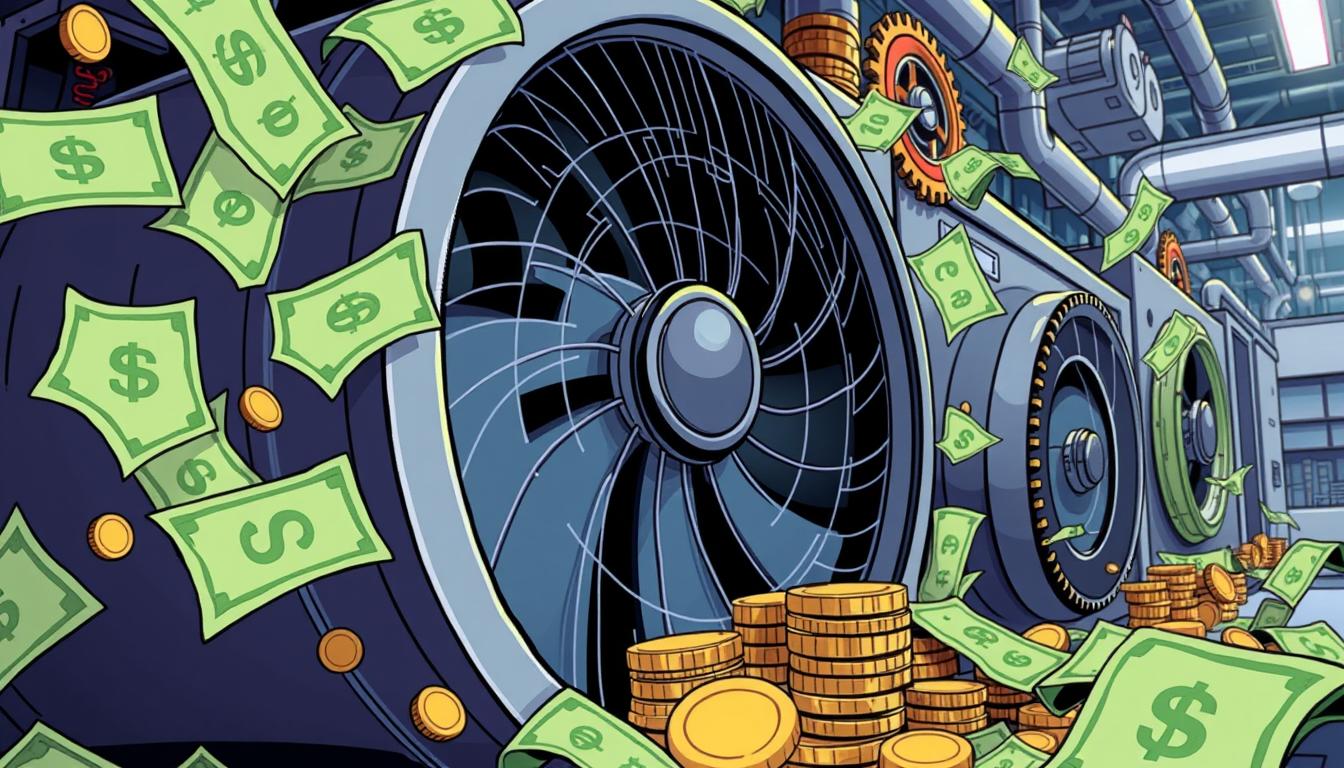

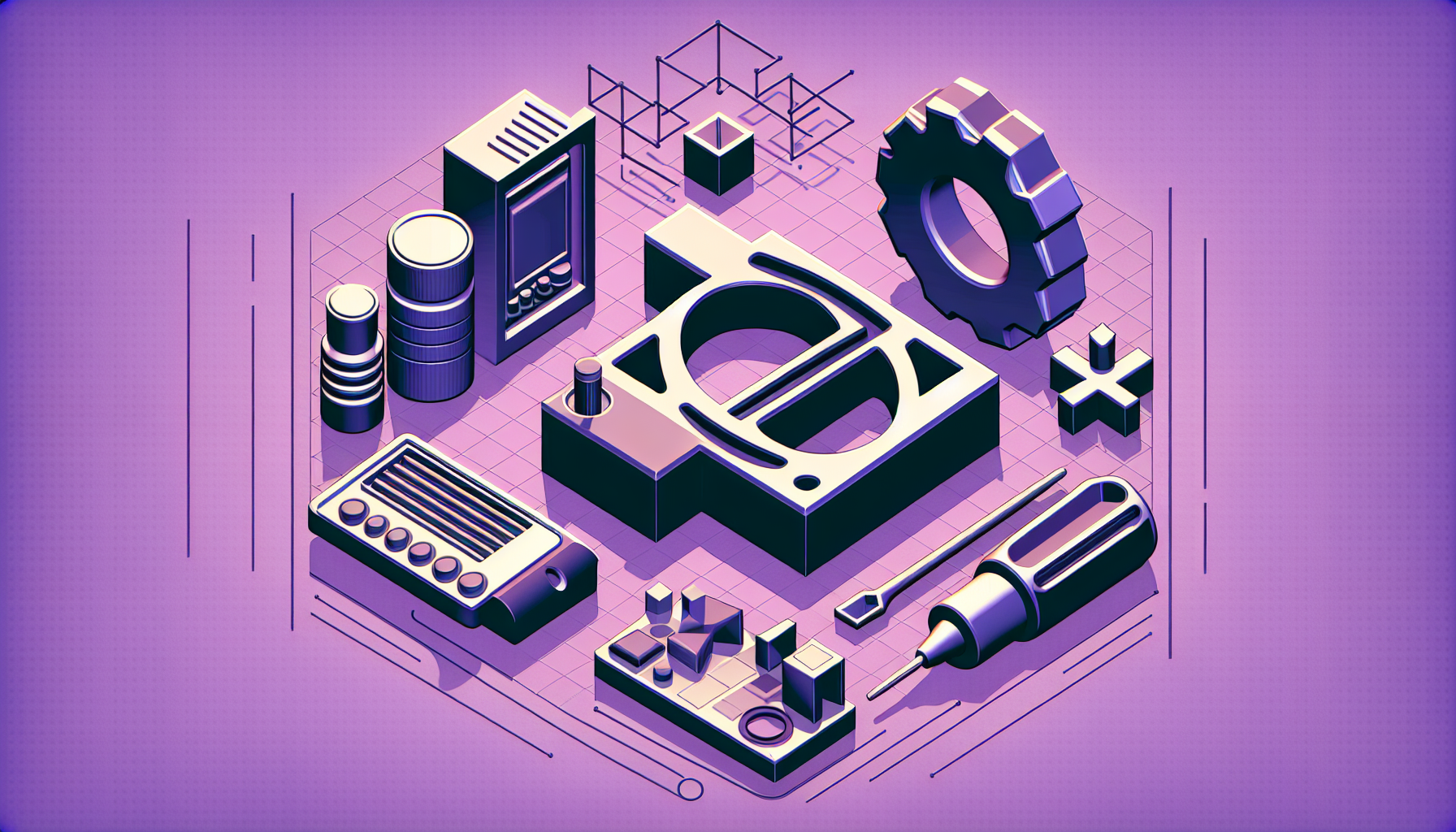
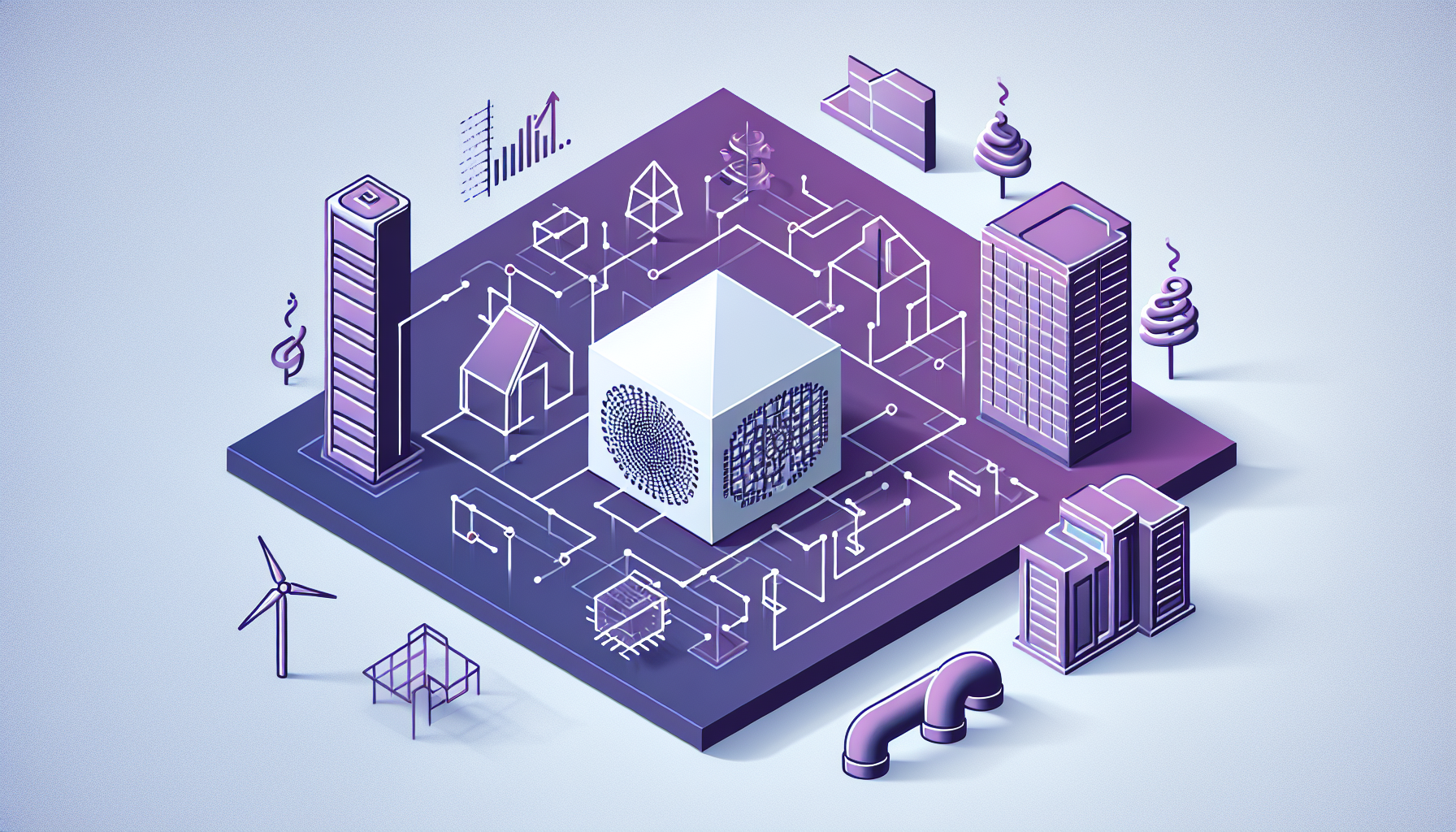
0 Comments